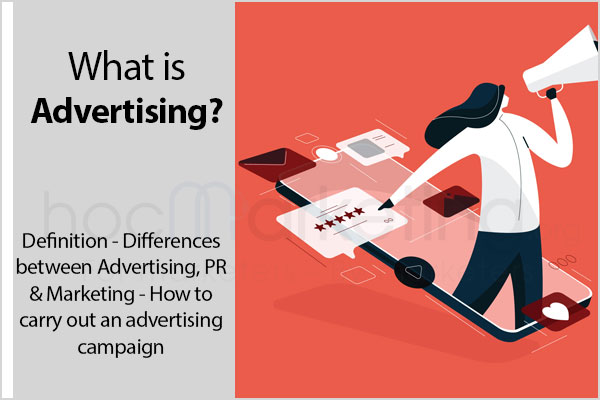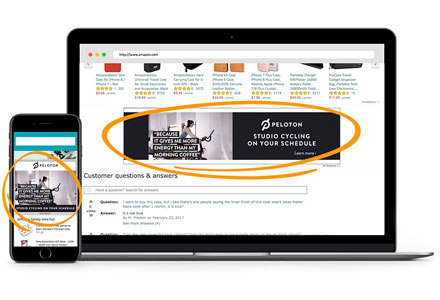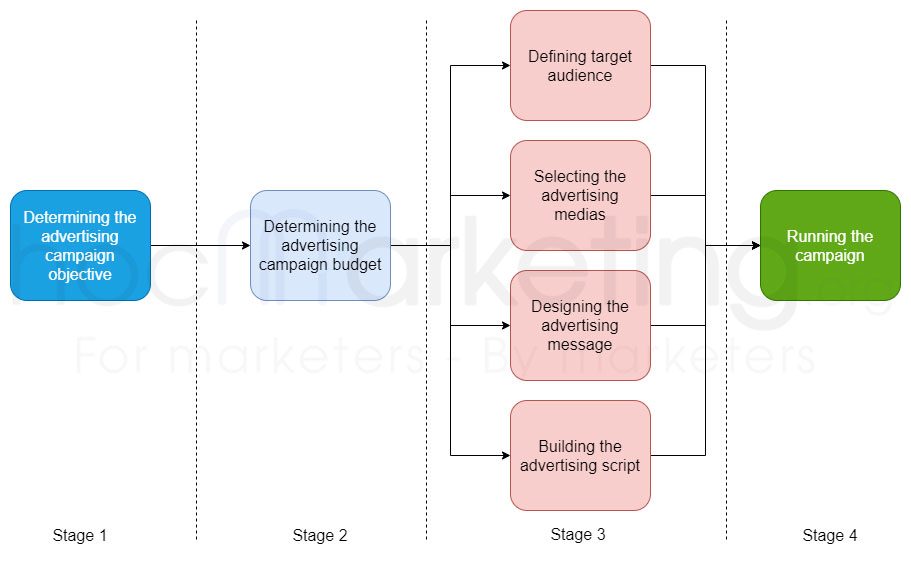
What is Advertising? How to carry out an advertising campaign

What is Advertising? Is Advertising different from or same as PR, Marketing? How to build an Advertising campaign? We will explore these issues together in the content of this article.
In today's modern social life, we can encounter advertising images anywhere, from billboards on the street, to billboards and advertising screens in buildings, website banners, video ads, social post ads, livestream ads...
So what is Advertising? Is Advertising different from or same as PR, Marketing? How to build an Advertising campaign? We will explore these issues together in the content of this article.
What is Advertising?
Advertising is a form of non-personal communication in which a business conveys a one-way message to listeners through media.
For a strategic role, Advertising is one of the four Promotional tools that are used mostly in businesses, establishments and non-profit organizations.
Forms of advertising
Advertising exists in many forms such as visual information in newspaper articles, radio advertising readings, television and Internet advertising videos, banners, posters, posters, billboards on the street, buildings, shopping malls, social media posts...
 |
 |
 |
 |
Differences between Advertising, PR and Marketing
Marketing, PR and Advertising are the 3 most easily confused concepts. This confusion is easy because their form is quite similar, although the nature & purpose are completely different. The confusion can be harmless if your job has nothing to do with Marketing, but it will be extremely harmful if you are working or studying in this field.
Let's compare the nature of these three concepts:
Marketing
- Marketing is the entire process of a business, a business establishment and creating and bringing value to customers and consumers.
- Marketing has no equivalent concept. Marketing is Marketing, no other word can completely replace it.
- Marketing has a broad meaning, including PR, advertising and other activities such as market research, market segmentation, product development, distribution channel building...
PR
- PR is an activity in which a business, establishment or individual builds and maintains good relationships with the surrounding community and public in order to enhance their value in the eyes of those communities.
- PR has a similar concept as public relations.
- PR is a tool in Marketing.
- PR is personal.
Advertising
- Advertising is an activity in which a business conveys a certain message to consumers, about the use and value of a product, service or brand.
- Advertising is non-personal.
The process of building an advertising campaign
In general, the process of building an advertising campaign in businesses consists of 4 stages, in which each phase includes steps, including: Determining the objective of the campaign, Determining the campaign budget, Building the advertising content, Running the campaign.
Stage 1: Determining the advertising campaign objective
Defining objectives is the first step in the process of building an advertising campaign. In general, the c objective of advertising campaigns is still to convey messages that bring customer value to the target audience. In detail, campaign objectives can be classified into the following four categories:
Informational Objectives: Provide important information to the target audience, such as the arrival of a new product, new brand, promotion...
Persuasive Objectives: Persuading customers to make a purchase as soon as the ad is aired, shown, or simply in choosing between alternative brands.
Recalling Objectives: Maintain brand awareness, remind customers of the existence of a brand, product, program, etc.
Call-to-action Objectives: Encourage and motivate customers to take actions such as calling, visiting the store, logging in to the website...
Stage 2: Determining the advertising campaign budget
Advertising budget is a factor that affects the size of the advertising campaign, the media can choose and directly affects the operating budget of the business. Businesses often determine advertising budget through the following 4 methods:
- Objective-based budget: Enterprises base themselves on the objectives set out in stage 1, then outline the tasks that need to be done, from which to calculate the costs that need to be spent to achieve the goals one by one. effectively.
- Margin-based budget: Enterprises always have a clear budget allocation according to operational functions, or departments. Based on the budget margin for marketing activities in general and advertising in particular, businesses will determine a reasonable budget for the advertising campaign.
- Sale-based budget: Some businesses define budgets based on a percentage of current or projected sales. Suppose, the revenue of the business in January is 2 million USD and the prescribed level for the advertising budget in February is 5% of the revenue in January, so the advertising budget in this case will be 100,000 USD.
- Competition-based budget: Some businesses set budgets so that the size of their advertising matches or exceeds that of their competitors. Others track the spending budgets of all competitors in the market, and then come up with a budget based on the average of the tracking results.
Some other important factors that businesses need to take into account and consider in the process of determining advertising budgets such as: the financial situation of the business (is the business making a profit or loss), life cycle, etc. (what stage in its life cycle the product/service is in, how much time is left before the product moves on to the next stage), competitors (number of competitors in the market) market, advertising frequency of competitors in recent times), fluctuations in the economic environment...
Stage 3: Building the advertising content
To be able to build the advertising content that can be heard by the target audience, businesses need to perform 4 main jobs: defining target audience, designing the advertising message, buidling the advertising content, and building the advertising script.
Defining target audience
Depending on the objective of the campaign, the target audience of the ad campaign may be different. Some advertising campaigns are aimed at all potential customers in the market, while others are targeted at certain segments or segments, others are targeted at a select number of audiences. Clearly identifying the target audience will help businesses have a basis to design advertising messages and choose appropriate media.
Designing the advertising message
Advertising message is the core part of an advertising campaign, plays a decisive role in the effectiveness of that campaign. It will be a great loss and waste for businesses if a large-scale advertising campaign carries a confusing, boring message that does not match the characteristics of culture, personality, interests... of the target audience. A message that is said to be effective usually meets most of the following criteria: short & concise, deep into the customer's concerns and problems, contains impressive and highly reminiscent images. , bringing meaningful values to the community.
In some countries, the content of advertising messages is regulated and regulated by law. Generally, the following elements will be prohibited in advertising content: Contains images, trademarks of other businesses, images that are inappropriate or contrary to the culture of the country, not in accordance with the regulations of the country. religion, encouraging acts that are forbidden by the law.
Selecting the advertising medias
After identifying the target audience and having the advertising message in hand, the business will proceed to the media selection process, including selecting the type of media, determining the coverage, frequency and timing of advertising in the media.
- Type of media: In addition to the old traditional media such as (articles in newspapers, magazines, readings on Radio, videos shown on TV, billboards on the street, buildings.. .), businesses can choose new media that have appeared in recent years such as articles on social networks, promotional videos on Youtube, banner ads on websites, advertising results on search engines. ... Depending on the behavior of the target audience, businesses make appropriate choices for the campaign.
- Coverage: The extent to which the ad can appear in the media, for example on how many television channels, newspapers and magazines appear, on how many billboards, reach as many users as possible on social networks...
- Time of appearance: The time when the business's advertisement appears in the media (the advertisement is broadcast at 7 pm on TV, the advertisement appears every Monday in the magazines). ...)
- Frequency of appearance: The frequency of advertising in the media (10 times/day, 5 times/week...)
Building the advertising script
Enterprises proceed to build the advertising script based on the message and suitable for the selected media. The work done includes selecting and defining the images, characters and stories that will appear in the advertisement; duration and length of the ad.
Stage 4: Running the campaign
After putting advertising content on the media, businesses need to monitor the operation of the campaign. Tracking work includes viewing periodic reports (daily, weekly) on the spent budget, the number of objects reached, the conversion rate... to be able to make plans. Adjust or optimize as needed.
Summary
Advertising is a powerful marketing tool that can help businesses increase brand awareness, drive traffic to their website, and ultimately generate more revenue. To be successful, businesses need to understand the entire process of advertising and apply it effectively.


















